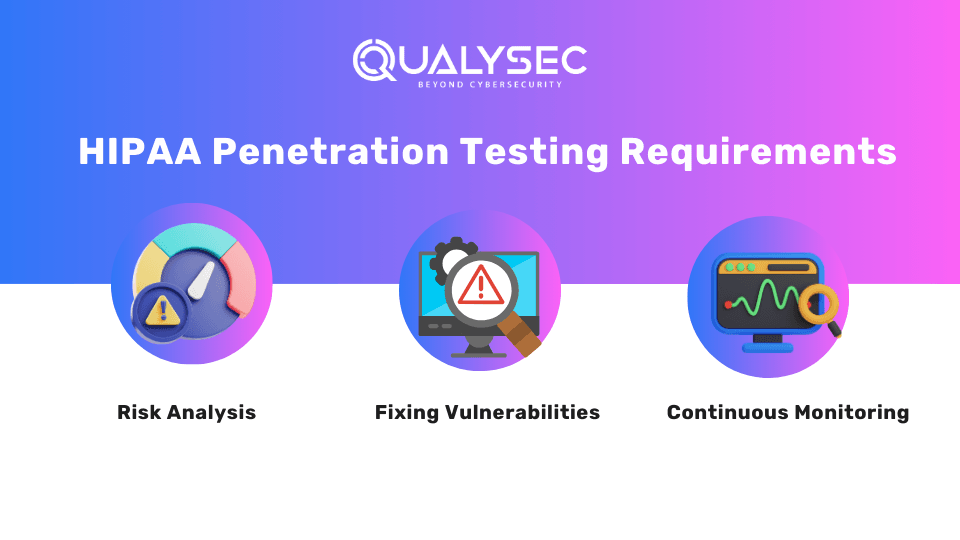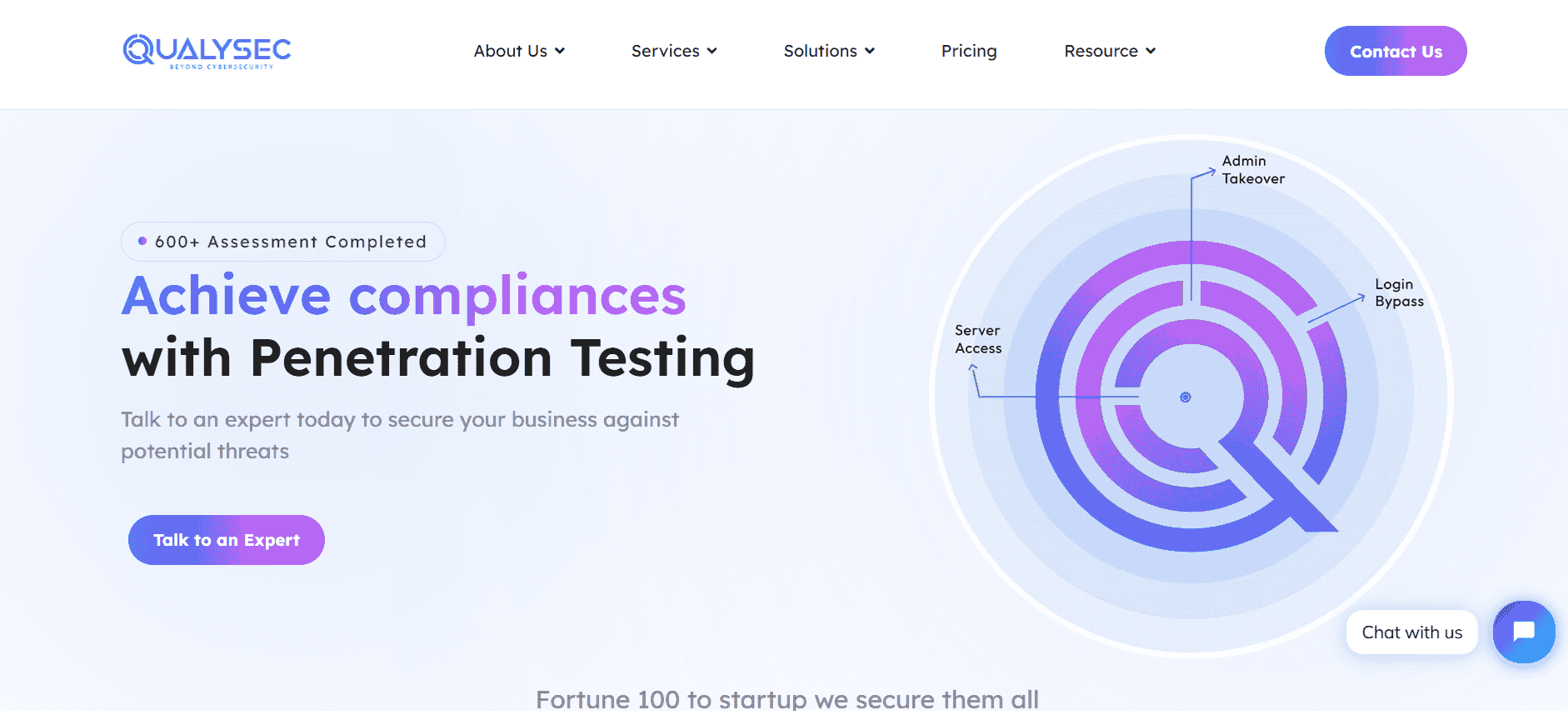In healthcare, protecting patient information is crucial for trust and smooth operations, which can be done through HIPPA Penetration Testing. Recent data from the HHS Office for Civil Rights (OCR) shows a big increase in data breaches and cyber attacks in healthcare. From 2018 to 2022, there was a 93% increase in large data breaches reported to OCR (from 369 to 712), and a 278% increase in ransomware attacks.
The Health Insurance Portability and Accountability Act (HIPAA) is a set of rules that protect the personal health information of people with health insurance. HIPAA compliance is necessary for any company, organization, hospital, or pharmaceutical that uses and stores confidential health information.
This blog will explain the requirements, steps, and factors for HIPAA penetration testing, and provide a solution for all your HIPAA compliance needs.
What is HIPPA Penetration Testing?
HIPAA is a law in the U.S. that makes sure patient information is safe. Because there are more cyber threats now, just following the rules isn’t always enough. That’s why healthcare groups do tests to find and fix any security problems.
HIPPA Penetration Testing helps keep patient data safe in today’s digital world. The tests are proactive steps to stop hackers and keep patient information private. By doing these tests, healthcare groups make sure they’re not just following basic rules but actively keeping patient information safe.
HIPAA penetration testing typically focuses on finding risks to ePHI and includes medical device cybersecurity. The FDA issued guidance in September 2023 addressing medical device cybersecurity, aligning with industry standards for Premarket Notification 510(k) and Postmarket Submissions.
In summary, HIPAA rules are important, but they’re not the only thing. Tests to find security problems are also crucial. These steps help healthcare groups stay safe from cyber threats and keep patient information private.
Does HIPAA require pen testing?
HIPAA’s Evaluation section and Information Access Management both say you need to regularly check your security measures for electronic patient information. NIST Special Publication 800-66r2, which helps with HIPAA, recommends penetration testing as a way to do these checks. This supports HIPAA’s rules for keeping patient information confidential, intact, and available.
HIPAA doesn’t say you must do penetration testing, but it’s strongly advised to protect patient data. Doing a pentest can help meet many HIPAA rules and follow NIST’s advice for following the law.
-
- Make sure all electronic patient information is kept private, unchanged, and accessible.
-
- Find and protect against expected threats to the information’s security or safety.
-
- Guard against expected, unauthorized uses or sharing.
HIPAA Penetration Testing Requirements
What are the HIPPA Penetration Testing Requirements, this section explains what every healthcare organization needs to do for HIPAA penetration testing:

Risk Analysis
Risk analysis means determining the impact of the vulnerabilities in the application that could let sensitive data, like patient health info, be exposed. HIPAA says you should keep doing risk analysis to protect against threats trying to get this personal health info.
HIPAA doesn’t specify the type of risk analysis to use, so organizations can choose between penetration tests and vulnerability assessments. Penetration tests are more thorough, as they find and exploit vulnerabilities to see how severe a potential hack could be.
Penetration testing is crucial under HIPAA because it helps identify how hackers might access protected health info.
Fixing Vulnerabilities
After doing a risk assessment, like healthcare penetration testing, HIPAA requires fixing vulnerabilities and areas of non-compliance quickly. Ignoring this step could leave the security system open to threats like data breaches. Once the penetration testing is done, a report is generated with details about the testing and a list of vulnerabilities, including how urgent they are to fix and the steps to fix them.
Download a Sample Report of penetration testing by clicking the link below!
Latest Penetration Testing Report

Continuous Monitoring
To stay compliant with HIPAA, organizations must continuously monitor and scan for new vulnerabilities that could threaten their online security. However, the tools and techniques used for penetration testing should be fully integrated into the security system to provide automated monitoring and ensure no false alarms, which could waste resources.
Understanding Penetration Testing in Healthcare
Penetration testing is really important in healthcare to keep patient information safe and follow HIPAA rules. It helps find and fix problems in the computer systems that store patient data:
| Phase | Description |
|---|---|
| Planning | Identify what parts of the healthcare system need testing, like patient records or healthcare apps. In addition to that, set clear goals and make sure all important areas are included. |
| Discovery | Gather detailed information about how the computer systems are set up. This helps find places where hackers could get in. |
| Attack | Try to break into the system like a hacker would. This shows how well the system can stop a real cyber attack. |
| Reporting | Write a report with all the problems found and how to fix them. This helps healthcare organizations make their systems stronger and protect patient data better. |
| Importance | Penetration testing is crucial in healthcare to protect patient information and comply with HIPAA rules. It helps find and fix problems in computer systems that store patient data. |
| Key Elements | – Identify parts of the healthcare system to test. – Gather detailed information about the system’s setup. – Simulate cyberattacks to find vulnerabilities. – Create a report with findings and recommendations. – Understand unique healthcare technologies and standards like EHR, DICOM, HL7, and FHIR. |
Choosing The Right HIPAA Pentesting Testing Service
| Criteria | Description |
|---|---|
| Reputation | Choose a company with a good reputation and experience. Check online reviews and talk to past customers. |
| Certifications | Ensure the provider is compliant with regulations and pen-testers have the right certifications and experience. |
| Detailed Reporting | Look for detailed reports with easy-to-follow steps and proof-of-concept videos. Collaboration features between pen testers and your team are a bonus. |
| Budget | Select services that fit your budget and offer customization options for your specific needs. |
How Qualysec can help with HIPPA Penetration Testing

Established in 2020, Qualysec surfaced as a trusted cybersecurity company, offering HIPAA Penetration Testing Services, VAPT, and security consulting. Since then, it has become a famed top player in the cybersecurity and penetration testing field. Qualysec boasts an expert team able to find vulnerabilities that malicious actors could exploit. They collaborate closely with clients to fix security issues, eventually enhancing overall security.
Qualysec’s team is composed of seasoned offensive specialists and security researchers, ensuring that clients have access to the latest security techniques. Their Pen-testing Services incorporate both human expertise and automated tools, delivering clear findings, mitigation strategies, and post-assessment consulting—all in adherence to industry standards. The comprehensive service portfolio includes:
-
- Web App Pentesting
- Mobile App Pentesting
- API Pentesting
- Cloud Security Pentesting
- IoT Device Pentesting
- Blockchain Pentesting
Qualysec offers a commitment to competitive pricing, a unique testing approach, on-time delivery, long-term partnerships, and utmost confidentiality making it a leading penetration testing company. Furthermore, it is dedicated to enhancing penetration testing and the cybersecurity landscape.
Hence, Qualysec’s comprehensive and reliable HIPAA Penetration Testing is suitable for your organization. Choose Qualysec to get in-depth insights and relevant recommendations from a skilled penetration testing team.
If your organization is planning a penetration test to support HIPAA compliance and is seeking a cybersecurity partner, feel free to contact our experts for assistance.
Talk to our Cybersecurity Expert to discuss your specific needs and how we can help your business.
Conclusion
As discussed in this guide, conducting penetration tests for HIPAA compliance is a crucial component of a healthcare organization’s cybersecurity strategy. Healthcare organizations need to understand that safeguarding patient data’s confidentiality, integrity, and availability is not only a regulatory obligation but also a fundamental aspect of patient care. Regular penetration testing, coupled with ongoing risk analysis, and a culture of security awareness, serves as a robust defense against the diverse cyber threats prevalent in the healthcare sector today.
By adopting these practices, healthcare providers can ensure compliance with HIPAA regulations, mitigate the risk of data breaches, and establish a resilient infrastructure capable of withstanding cyber attacks, including those carried out by ransomware groups. In fact, this commitment helps healthcare organizations maintain the trust placed in them by individuals and society, ensuring that sensitive patient health information remains secure and confidential.
FAQs
Q: What are HIPAA penetration testing requirements?
A: HIPAA does not mandate any form of penetration testing specifically. However, such exercises are still recommended to help protect ePHI and increase your healthcare organization’s security controls.
Q: What is the HIPAA Security Rule?
A: The HIPAA Security Rule obliges healthcare professionals to establish administrative, physical, and technical safeguards to protect patient data. Additionally, it covers all electronic health information systems in the organization.
Q: How much does a HIPAA penetration test cost?
A: The cost of a HIPAA penetration test varies, ranging from a few thousand to tens of thousands of dollars. However, it also depends on the size and complexity of the healthcare organization’s IT infrastructure and the scope of testing.















































































































































































































































































































































0 Comments